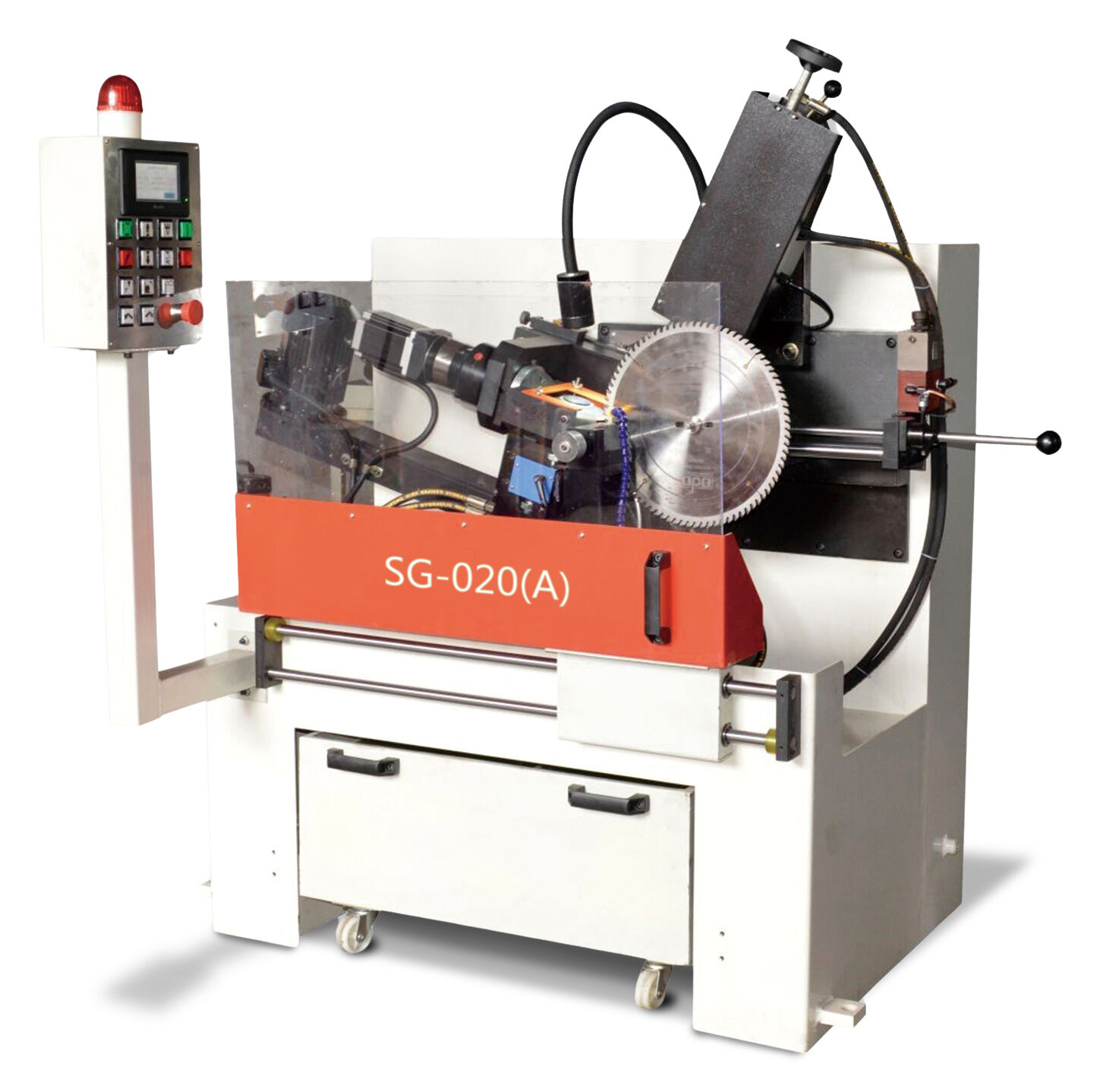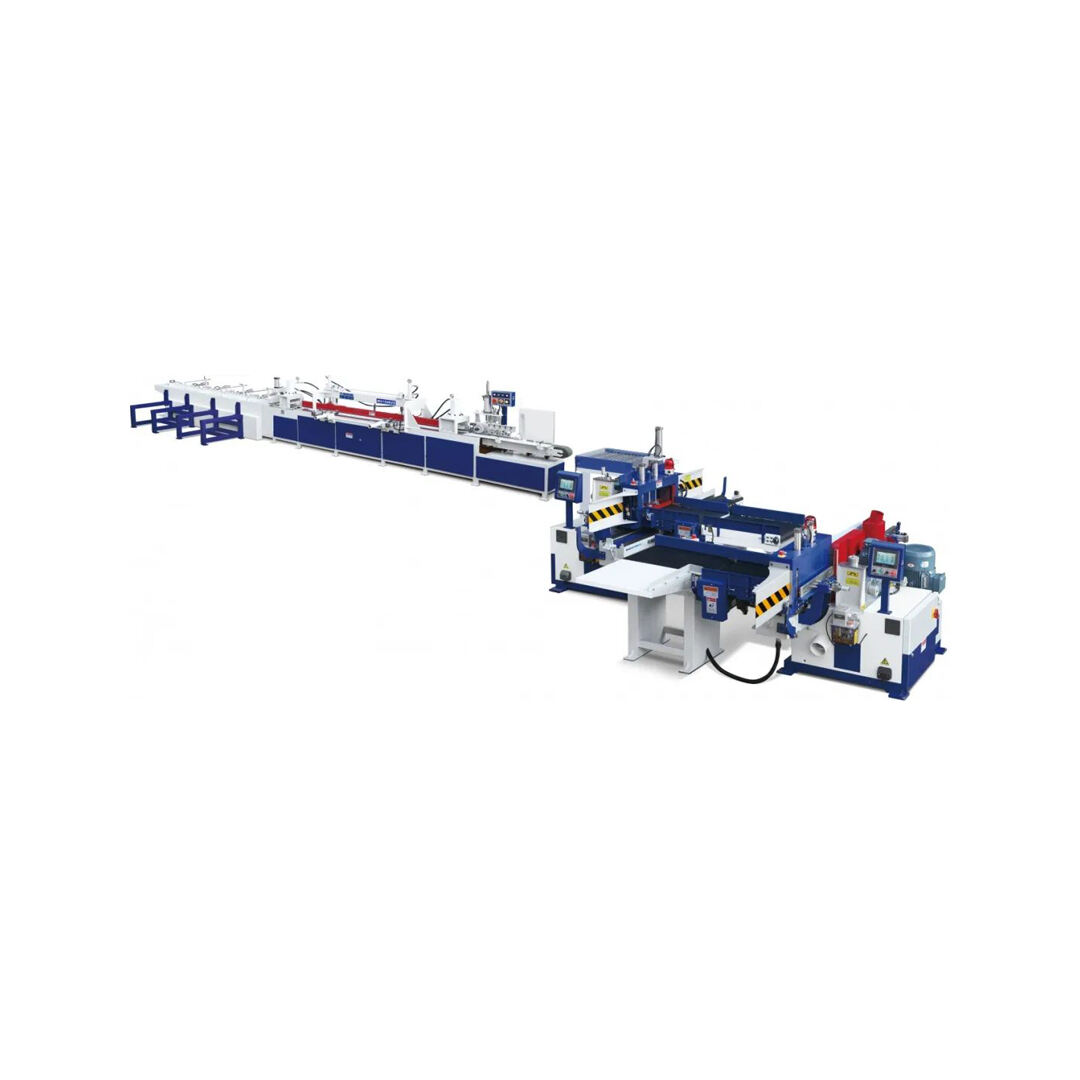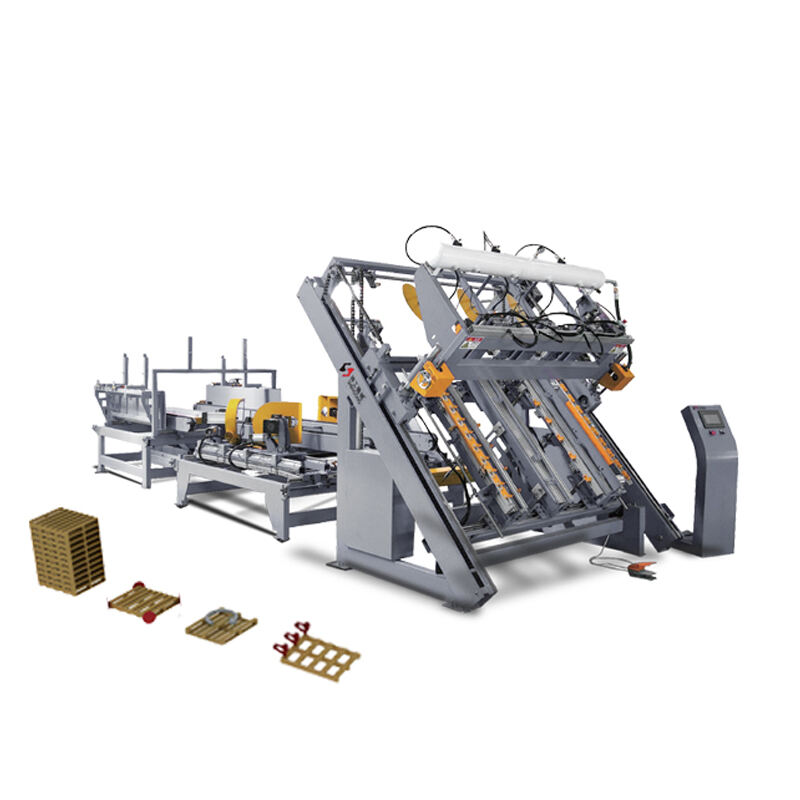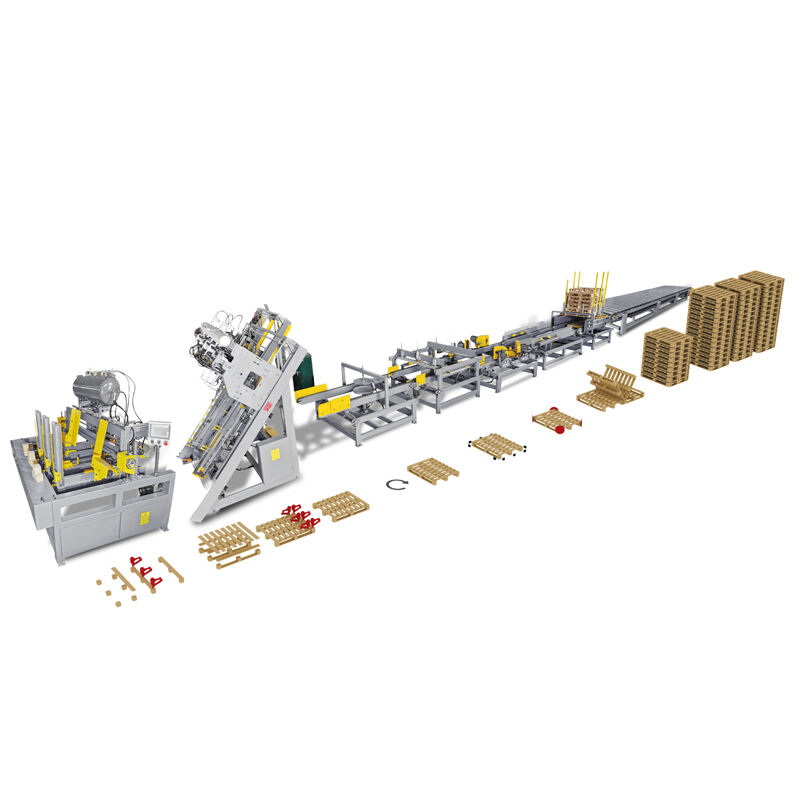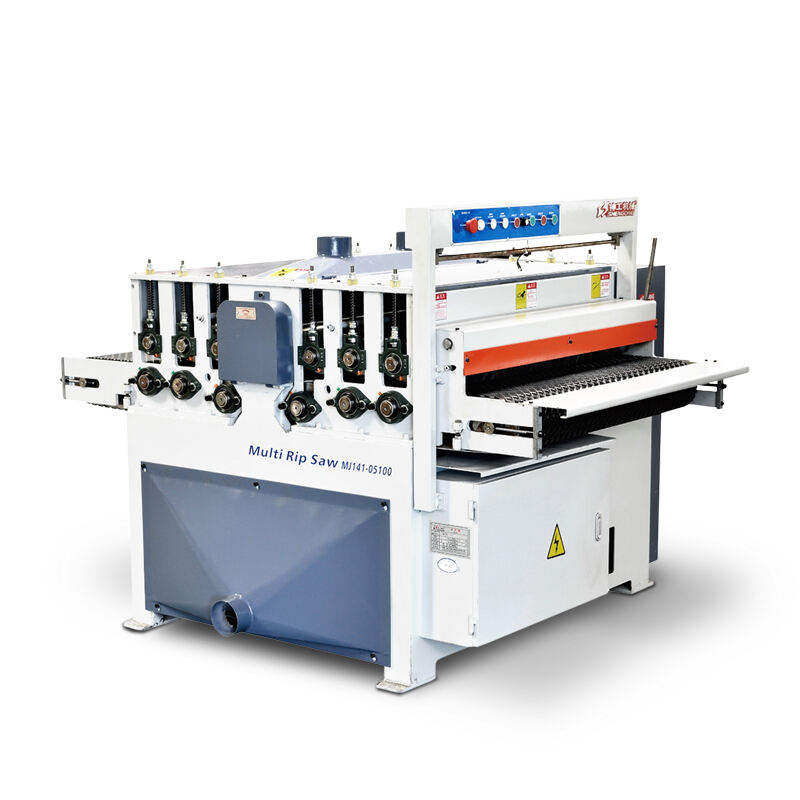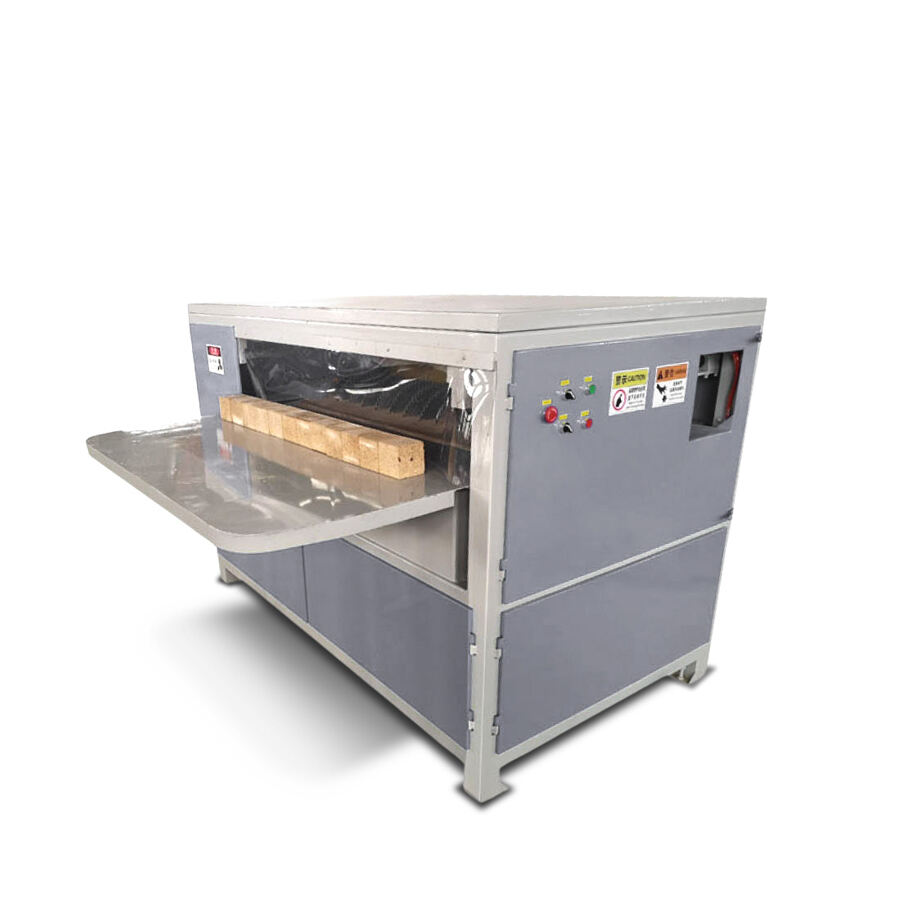Understanding the Multi-Blade Saw: Working Principle and Applications
Multi-blade saws have become essential equipment across many woodworking shops, especially those dealing with large volume production runs. What makes these machines so effective is their design with multiple spinning blades that cut through material at once, which cuts down on production time significantly compared to older methods. Instead of having to run each board individually through a standard saw, operators can stack several pieces together and let the multi-blade handle them all in one go. This feature explains why sawmills and furniture factories rely heavily on these setups when they need to maintain steady output levels while keeping quality consistent between batches. For anyone running a serious wood manufacturing operation today, investing in good multi-blade technology often means the difference between meeting deadlines and falling behind schedule.
Multi blade saws have been designed to boost efficiency in ways that regular single blade models just cant match. Most models come equipped with several parallel blades mounted together on a spinning disc. When lumber goes through this setup, all those blades slice through at once, which means faster cuts and better accuracy across the board. Shops that switch to these multi blade systems often see production numbers jump while needing fewer workers to handle the same workload. For manufacturers looking to get more done with less hassle, these saws represent a smart investment that pays off both in terms of time saved and improved end products.
Key Features and Advantages of Multi-Blade Saws
Multi blade saws really boost cutting speed and how much material gets handled when compared to older style saws, which means less time spent on operations and lower overall costs. They handle bigger volumes of wood because they work with several blades at the same time. With this setup, these machines can slice through different layers all together, something that regular band saws just cant match. Faster cutting speeds mean more productivity for workshops obviously, but there's another benefit too the machines themselves last longer between repairs since they're not working as hard all the time. That translates into real money saved over months and years of operation.
When it comes to working with wood, safety should be at the top of everyone's list, especially when dealing with those powerful multi-blade saws around the shop. Most models actually have pretty good safety stuff built right in. Take blade guards for instance they cover up those spinning blades so fingers don't get too close during cuts. And let's not forget about those red emergency stop buttons usually mounted right on the side panel somewhere. Press them fast if something goes wrong and the whole machine shuts down almost instantly. This kind of setup helps keep shops running smoothly without putting workers in danger all the time. After all, nobody wants to spend their lunch break in the clinic instead of grabbing a sandwich.
Applications of Multi-Blade Saws in Various Industries
Multi blade saws play a big role in the wood processing business because they cut with incredible accuracy needed for proper lumber prep work. What makes these machines so valuable is their ability to handle several pieces at once, which means operations can run much faster than traditional methods. That's why most big mills rely on them when dealing with volume production. Take log cutting into boards for instance. These saws maintain uniform thickness across all cuts while leaving nice clean edges behind. This saves time down the line since there's less sanding or planing required afterward. Some shops even report saving hundreds of hours annually just from not having to do extra finishing work.
When it comes to making furniture, multi blade saws play a really important part in workshops across the country. Getting those cuts right matters a lot when crafting good quality pieces. These specialized tools cut through wood with remarkable precision, allowing craftsmen to create detailed designs needed for all sorts of furniture parts like decorative door panels, ornate table legs, and curved chair backs. The level of detail these saws provide means every component fits together exactly how it should, resulting in finished items that look great and hold up over time. With faster production times and better cut quality, manufacturers can keep up with customers who want unique, long lasting furniture options that stand out from mass produced alternatives on store shelves.
Product Spotlight: Wood Block Multi-Blade Saw
The Wood Block Multi-Blade Saw stands out as a game changer when it comes to turning big chunks of raw timber into something actually useful for building projects. Woodworkers love this machine because it can process tons of material much faster than old school techniques ever could. What makes it so valuable? Well, basically, it slices through those massive blocks with pinpoint accuracy every single time. That's why factories and shops needing consistent results rely on these saws day after day. They just plain get the job done better than anything else around when speed matters most.
Key Specifications
- Blade Configuration: The multi-blade design allows simultaneous cutting, maximizing efficiency and ensuring consistent output.
- Power Requirements: Powered by a robust 30kW engine, it ensures smooth and powerful operation capable of handling demanding tasks.
- Cutting Capacity: This machine supports a sawing width of up to 200mm and a height of 100mm, with a timber length of 1250mm, making it suitable for various wood dimensions.
Advantages
What really sets the Wood Block Multi-Blade Saw apart isn't just the specs on paper. The thing can handle several cuts at once, which means getting way more done in less time. Less wasted wood too, something good for the planet and better for the bottom line when looking at production costs. People who've used it talk about how clean those cuts are straight out of the machine, so there's not as much finishing work needed later on. Safety is another big plus point. Those automatic cutting functions take care of a lot of the hands-on stuff that usually requires someone standing right there, watching every move. Makes sense why shop floors report fewer incidents since operators aren't constantly reaching into dangerous areas during operation.
In summary, the Wood Block Multi-Blade Saw represents a significant advancement in wood processing technology, providing efficient, safe, and quality cuts suitable for various industrial applications. Its ability to reduce waste and improve output quality makes it a valuable asset for any woodworking operation.
Comparing Multi-Blade Saws with Other Wood Cutting Machines
Multi blade saws and band saw machines actually work quite differently from one another, each good at certain kinds of woodwork tasks. The multi rip saw is basically made for fast work, turning logs into boards really quickly and accurately. These saws are what big lumber mills rely on because they can slice through several boards all at once, which saves tons of time when producing wood on a large scale. Band saws tell a different story though. What makes them special is how well they handle complicated shapes and curved cuts, something that's super important for detailed woodworking projects. Sure, band saws give woodworkers more options, but there's still nothing quite like a multi blade saw when it comes to making those long straight cuts consistently and at lightning speed.
When it comes to working with timber, most mills rely on both log saw machines and multi blade saws to get the job done right. The first step usually involves log saw machines making those initial cuts that break down big logs into something more workable. After that stage, the multi blade saws take over, slicing through the cut pieces to produce boards of consistent size. This arrangement actually makes good sense from a business standpoint since it helps make better use of the wood stock and cuts down on scraps going to waste. Most experienced operators will tell anyone that these two types of equipment really need each other to function properly in the mill environment. Without one or the other, the whole lumber production process just doesn't flow as smoothly.
Maintaining Your Multi-Blade Saw for Longevity
Taking care of a multi-blade saw through regular maintenance really pays off in terms of how long it lasts and how well it performs day after day. Start simple enough by giving the whole unit a good cleaning on a regular basis. Wood dust tends to collect around the motor housing and under the blade guards, so getting rid of this buildup keeps things running properly. Don't forget to look at those blades closely too. Any nicks, chips, or uneven edges mean they need sharpening soon. A dull blade makes work harder and less precise than it should be. The moving parts deserve attention as well. Apply some quality lubricant to hinges, slides, and pivot points every few months. This reduces friction and stops unnecessary wear over time. When all these basic upkeep steps get done consistently, operators find their machines run smoother, cut cleaner, and generally just last longer without unexpected breakdowns during critical jobs.
Troubleshooting problems with tools often starts with checking what went wrong first. If blades are out of alignment, this usually causes crooked cuts and puts extra strain on the motor. On the flip side, when blades show signs of heavy wear, replacement becomes necessary pretty quickly. Maintaining a multi-blade saw properly matters a lot both because good results depend on it and safety concerns come into play too. Doing routine checks and fixing small issues before they get worse helps keep the tool working well for years instead of just months. Most people find that spending an hour or two every few months on basic upkeep saves them money in the long run while avoiding frustrating breakdowns at inconvenient times.
FAQ
- What is a multi-blade saw? A multi-blade saw is a woodworking machine that uses multiple blades to process layers of wood in a single pass, enhancing efficiency and precision.
- What are the benefits of using a multi-blade saw? Multi-blade saws provide faster processing speeds, increased productivity, and reduced machine wear, along with robust safety features.
- How are multi-blade saws used in the woodworking industry? They are used for high-precision cuts in lumber preparation, furniture manufacturing, and processing wood into uniform boards or intricate patterns.
- What maintenance is required for multi-blade saws? Maintenance includes regular cleaning, blade inspection and sharpening, lubricating moving parts, and consulting the manufacturer's manual for troubleshooting issues.


